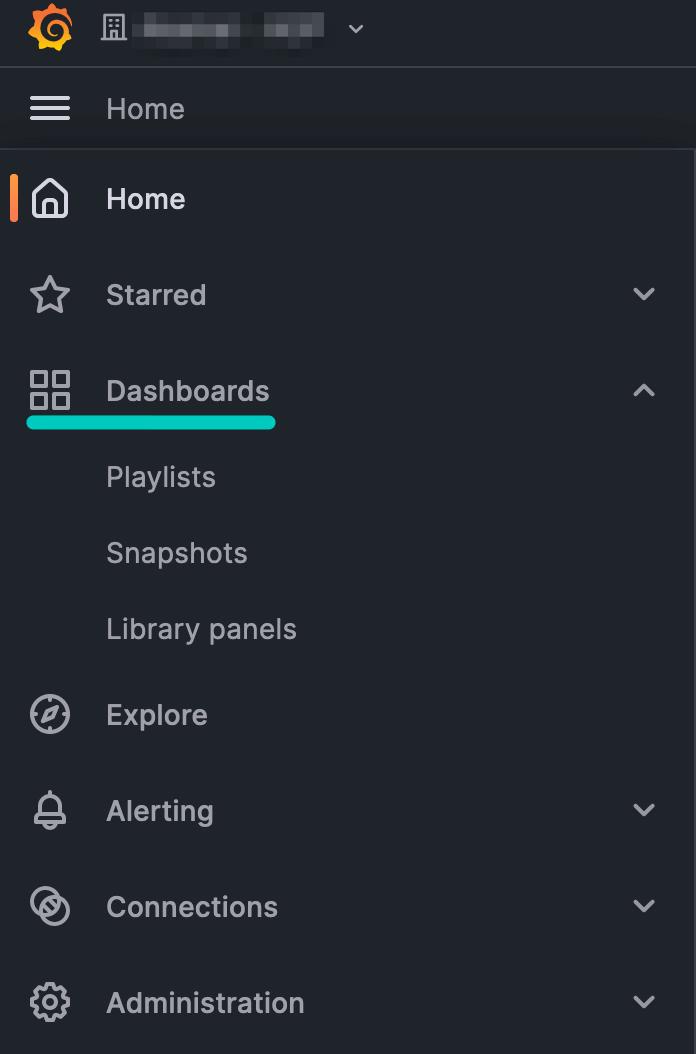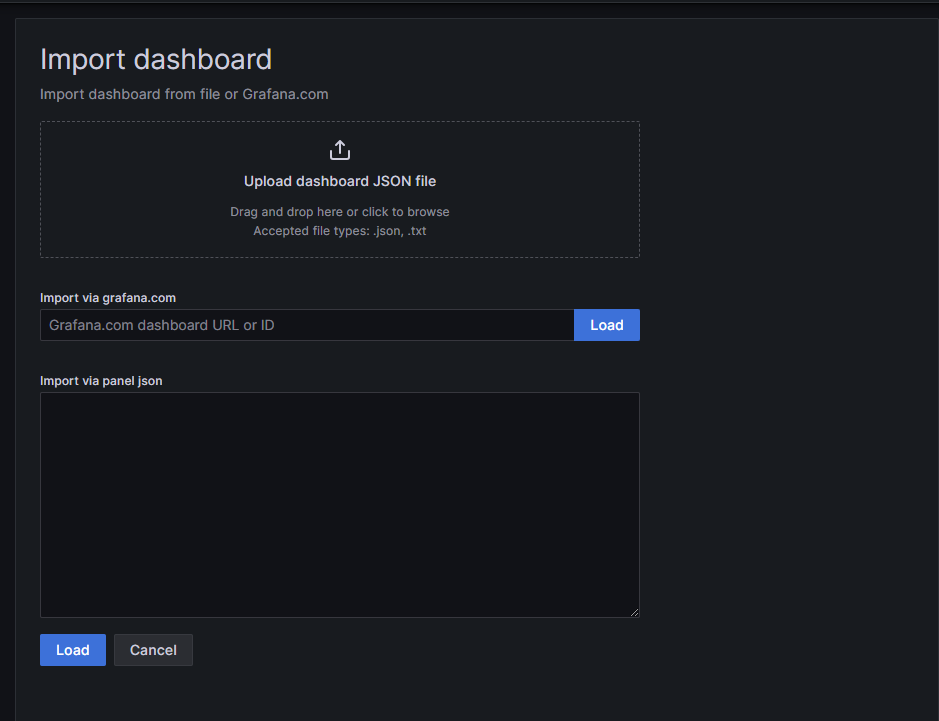Customize Grafana Dashboards
Hydrolix for AWS provides ready-made dashboards to provide you with the essential information you need. You're free to add your own new dashboards and add widgets to those dashboards.
Your dashboards are stored in your own Grafana organization within the Hydrolix Grafana installations. If you need even more customization that requires modification of the Grafana server’s configuration, create your own self-hosted Grafana instance or use Grafana Cloud.
List Dashboards
The most commonly used dashboards will show up on the home page of the Grafana interface. However, if you want to list all the dashboards, open up the Home menu and click “Dashboards.”

Dashboard Folder Layout
From this view, dashboards can be created, imported, and organized into folders via the “New” button on the right. Searching and filtering is available, as is the list of dashboards and folders.
Pre-made dashboards are write-protected and automatically updated with new versions as they become available.
Copy Dashboards
Grafana makes it simple to create a copy of any default dashboard for customization.
Why should I copy the default dashboards?
The default dashboards are occasionally updated with the latest widgets and charts. It’s a good practice to copy these dashboards and modify the copied versions rather than modifying the default dashboards directly. This will avoid having your changes being overwritten by new versions of dashboards that are written to the “Hydrolix” folder.
-
View the dashboard you wish to copy
-
Click the "Share" link
-
Select the “Export” option at the top and make sure to select “Export for sharing externally”

-
Select “View JSON” and then “Copy to Clipboard.”
-
Go back to your “Dashboards” menu, Click “New” and “Import”

-
Paste your dashboard into the “Import via panel json” box and click “Load.”

-
Review the resulting dashboard import screen.
If you are importing into the same organization, you may see the warnings about the dashboard already existing. If you import now, you will overwrite the existing dashboard, which isn’t what you want.
Instead, before you click “Import,” change the name, select the folder you want to put it in and modify the UID. Also, make sure you select the Clickhouse DataSource as otherwise the Grafana dashboard won’t know where to collect its data. The table can stay as it is.
-
Finally, click “Import”.
You should now have a personalized copy of the dashboard that you can modify to suit your needs.
Updated 7 months ago